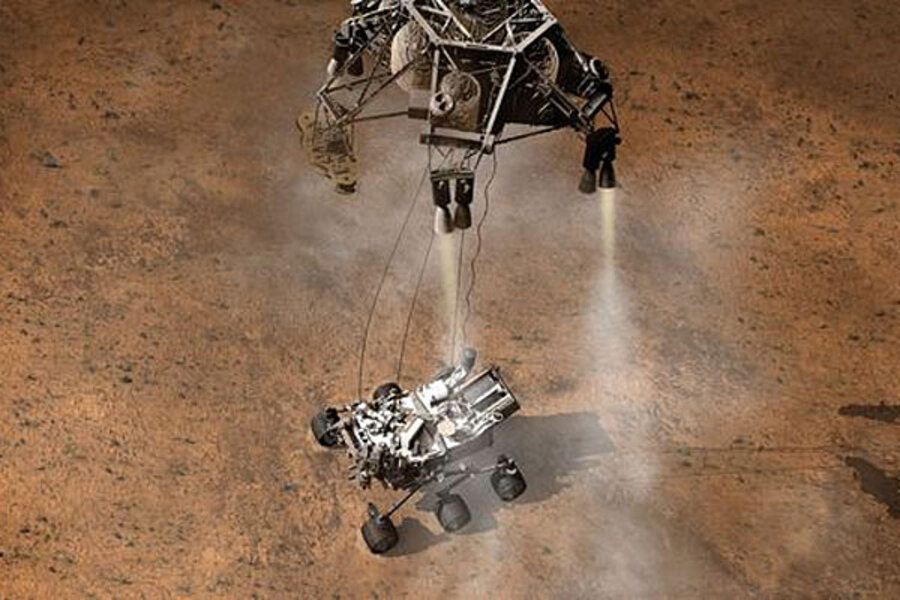Spacecraft glitch means NASA will have to wait to learn if Mars rover lands safely
| Cape Carnaveral, Fla.
NASA's new Mars rover is heading for a risky do-or-die touchdown next month to assess conditions for life on the planet, but the U.S. space agency may not know for hours whether it arrived safely, managers said on Monday.
That's because the satellite that NASA was counting on for real-time coverage of the Mars Science Laboratory's descent into Gale Crater, located near the planet's equator, was sidelined last month by a maneuvering system glitch.
Managers were able to recover the satellite, but it is now in a different orbit than intended, which may make it unable to view and record the rover's seven-minute descent and landing.
Two other spacecraft orbiting Mars will be monitoring the probe's arrival, but one records data for later playback and the other won't be aligned to see the last minute of flight, NASA's Mars exploration program chief Doug McCuistion told reporters.
"“We're assessing what the issues are," McCuistion said. “"There's no impact to landing itself. It's simply how that data gets returned to us and how timely that data is."
Mars Science Lab, nicknamed Curiosity, is scheduled to land at 1:31 a.m. EDT (0531 GMT) on Aug. 6 inside an 96-mile (155-km) wide impact basin that may be one of the final resting places for Mars' lost surface water.
The planet, which is about 1.5 times as far away from the sun as Earth, is a cold, dry and acidic desert today. But that was not always the case.
Previous orbiters, landers and rovers have turned up solid evidence of water, including geologic features such as channels, as well as chemical fingerprints of clays and minerals that on Earth form when rock interacts with water.
Gale Crater is one of the lowest places on Mars.
Searching for water
"“It's like a little bowl, capturing any water that may have been present there," said project scientist John Grotzinger, with the California Institute of Technology. "“Water flows downhill, and if you don't know anything else in advance, that's where you want to go to find evidence of water."
Curiosity is after more than water, however. To support Earth-like life, an environment needs water, an energy source, like the sun or chemical energy, and carbon.
The goal of the mission, designed to last two years, is to assess whether Gale Crater had all the ingredients at the right time and in the right places for microbial life to arise and be preserved.
The basin sports a 3-mile (5-km) high mound of what appears to be layers of sediment, which at one time might have completely filled the crater.
"One of the main reasons why we're going to Mars is to figure out whether life ever started there," said NASA's lead Mars scientist Michael Meyer.
“"If in the second place in our solar system that we think life has a possibility and actually did start there, my conclusion would be that life is easy, it's a natural process and the universe is just littered with places that have life," Meyer said.
Weighing in at about a ton, Curiosity is too big for the landing bags and thruster rockets that were designed to let previous probes to Mars touch down gently down on its surface.
Instead, engineers designed a complicated landing system that navigates through the thin but unpredictable atmosphere, deploys a massive parachute at supersonic speeds and fires up a rocket-powered descent platform. The platform holds an aerial crane to lower the rover on a tether to the surface of Gale Crater and fly away.
NASA calls the rover's dicey entry, descent and landing the “"seven minutes of terror."
Thanks to potential communications issues, that may be followed by a few hours of nail-biting anxiety.
(Editing by Tom Brown and Philip Barbara)






